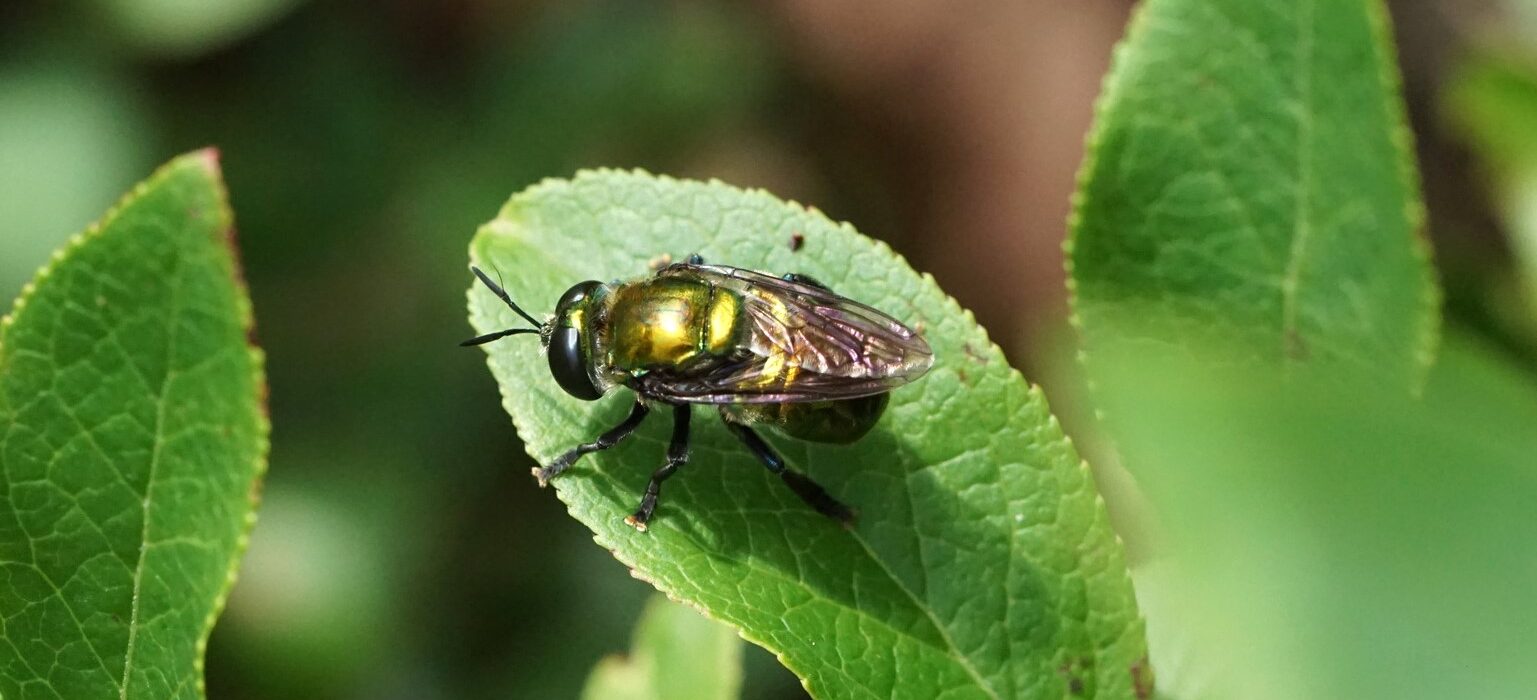Hover Flies (Syrphidae)
The family Syrphidae, commonly known as “hover flies” or “flower flies,” is probably the most accessible fly family for amateurs to study and appreciate. The family is of reasonable size, with Bugguide.net reporting a relatively modest 813 species in 100 genera in North America. And it is of modest taxonomic complexity, with only four subfamilies (three of which are represented on the accompanying checklist). Relative to most of the order Diptera, Syrphids are easy to identify, with many species readily recognizable under field conditions and many more identifiable from good photographs. Of Martha’s Vineyard iNat observations for the family Syrphidae, about 87% have been confirmed to “research grade” standards – a remarkably high figure for a Dipteran family.
Their habits of hovering and visiting flowers will often tip you off to the fact that you’re observing a Syrphid. Members of this family tend to be colorful, often with black-and-yellow patterns on the abdomen that resemble the coloration of bees or wasps, a resemblance that presumably affords Syrphids some protection from predators. Some species, mostly within Eristalinae, have bold striping on the thorax; others, mostly within Syrphinae, may have metallic or iridescent coloration on the thorax. A few species in Ersitalinae have oddly shaped, protuberant faces; a few in Syrphinae have slender, elongated bodies. While Syprhids rank among the higher flies and accordingly tend to have short, three-segmented antennae, some, particularly wasp mimics in Erisatlinae, may have elongated (though still three-segmented) antennae. Wing venation can be of some help in identification, particularly in getting to subfamily or tribe.
All that said, there are plenty of identification challenges among the Syrphids, with some genera requiring microscopic examination for species-level identification and some genera being desperately in need of revision (Paragus, Platycheirus, Sphaerophoria, and Eupeodes are among the ones we’ve found pose difficult ID problems). We urge observers to take a cautious approach with Syrphids as with other groups: a genus-level ID may leave you feeling vaguely unsatisfied, but an imprecise ID is much less harmful than a precise but incorrect one.
The checklist for Martha’s Vineyard presented here, with 49 taxa included, can be assumed to be incomplete, probably woefully so. Like the rest of Diptera, Syrphids have not received much serious attention from naturalists, and we figured that even a partial species list would be a useful starting point. We have included mainly “research grade” iNaturalist records from Martha’s Vineyard for this checklist, though we’ve included three genera (Eumerus, Cheilosia, and Parasyrphus) that we are confident are present on the Vineyard but have not yet been identified to species level (and hence are not eligible for “research grade” status). Microdon fulgens is listed at the species level based on a research-grade iNaturalist observation; an obseration of what is clearly a different Microdon species, probably in the subgenus Microdon rather than Chymophila, is listed as a second Microdon species.
Many species are included in our checklist on the force of a single iNaturalist observation. One should not conclude that such species are rare here, any more than one should conclude that species missing from the checklist are absent from the Vineyard. We hope that, over time, increased observer activity will both expand the list of species known from the island and clarify the status of species already documented. We’re grateful to the many iNaturalist users who have provided or confirmed identifications of Syrphids on the Vineyard; in particular, Trina Roberts and Catherine C. Galley have been enormously generous with their time and expertise.
While common names are often problematic with insects, Skevington et al. (2019) makes a valiant effort to propose and standardize reasonable common names for Syrphids, and we are including those names in the accompanying checklist. We caution that because common names for Syrphids (and flies generally) are not well standardized, the common names included here may not correspond with names used in other places.
The Syrphids, like most fly families, are of considerable but rarely recognized ecological importance. Larvae in the subfamily Eristalinae are typically detritivores, part of the large and diverse fauna that helps break down organic matter and recycle nutrients. Some are aquatic. Larvae of the Syrphinae, in contrast, are largely predatory, with many species preying on aphids. Adult Syrphids of all kinds visit flowers to feed on pollen or nectar, so these flies function as pollinators.
Among Syrphids known from Martha’s Vineyard are several exotic or introduced species, indicated by the letter “I” in the “Comments” column of the accompanying spreadsheet. The non-native Syritta pipiens is widespread and abundant on the Vineyard; Erisalis arbustorum appears to be very strongly associated with agricultural settings. Eristalis tenax is a hardy exotic late-season species with records extending into December. Of our native species, the most abundant are probably the tiny members of the genus Toxomerus. T. geminatus and T. marginatus rank among the most common and widespread flies on the Vineyard, occurring virtually everywhere there are flowers; T. politus is much less prevalent but can still turn up nearly anywhere on the island.
Skevington, et al. (2019) is a valuable resource for anyone interested in learning about Syrphids. This important volume functions as an identification guide both in the field and in the lab, and it compiles the best available information on the distribution and ecology of Syrphids in the northeastern United States. A good general treatment of the family, along with some photo plates that can be useful for ID, can be found in the magisterial Marshall (2012).
Matt Pelikan; edited by Matt Pelikan, October 8, 2024
References
Marshall, S.A. Flies: the Natural History and Diversity of Diptera. 2012. New York: Firefly Books.
Skevington, J.H., M. Locke, A. Young, K. Moran, William Crins, and S. Marshal. 2019. Field Guide to the Flower Flies of Northeastern North America. Princeton, New Jersey: Princeton University Press.
Web Resources
Field/Photo ID for Syrphidae: a valuable resource established by Even Dankowicz in 2019 and currently maintained by Zachary and Even Dankowicz. https://sites.google.com/view/flyguide/species-guides/syrphidae?authuser=0
